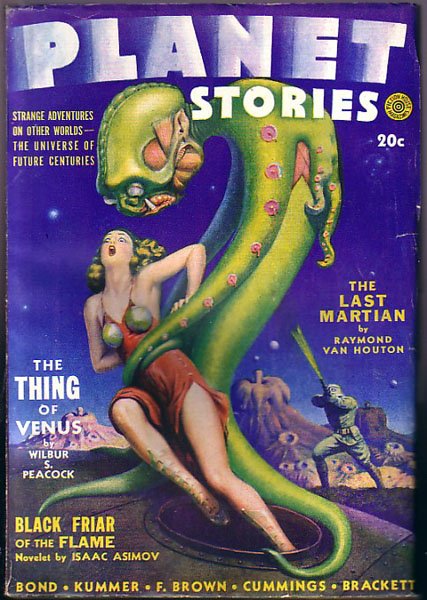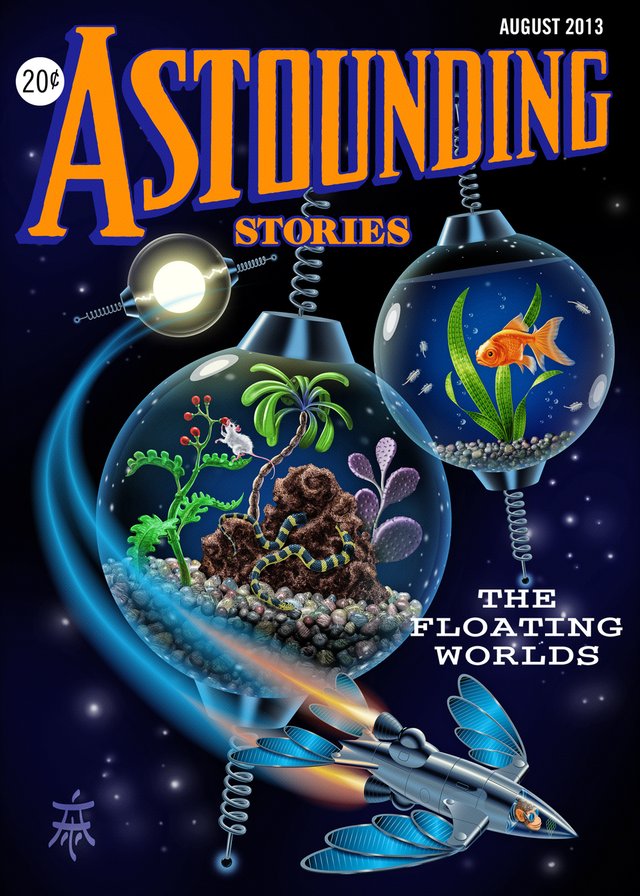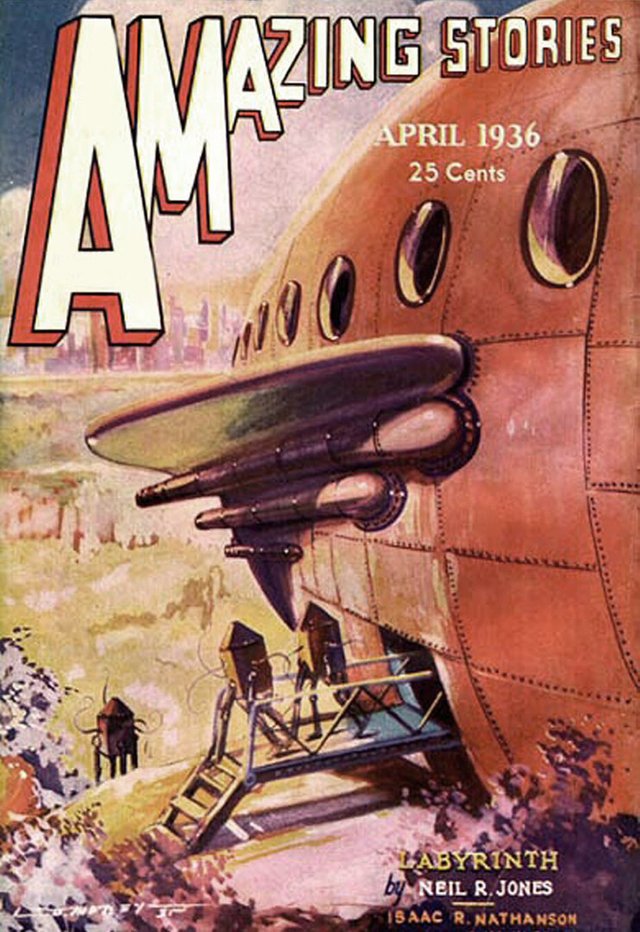How the Earthlings "Conquered" the Stars (Original short story)

It is often by a series of bumbling errors and happenstance that primitive cultures first achieve interstellar travel. And so it was with the Earthlings.
Excerpted from the hot new intergalactic bestseller Oh Shit: The Early History of the Terran Diaspora by Frengen Muck.
Pygmalion, an Earth-like planet orbiting the dwarf star Galatea, approximately 107 parsecs from Earth, was first spotted through a rudimentary telescope in the Terran year 2051 by Dr. Juan Hernando Maria Fernandez. Dr. Fernandez, an Ecuadorian orthodontist who dabbled in astronomy, wrote in his autobiography that his finding of the planet was a mere coincidence, and that Pygmalion might have remained undiscovered had he not spilled his glass of wine and bumped the telescope in his drunken haste to clean up the mess. It was not the first time a being has made an important scientific discovery under the influence of intoxicants, nor would it be the last.
Earth was, at the time, a dirty, overcrowded place, and its people suffered from malnutrition and moodiness.
A mostly fruitless campaign to find elbow room elsewhere in the galaxy had been in effect for nearly a century, and most people felt that they had had it up to here. Sure, Terra's next-door-neighbor, Mars, had been colonized, but it was only capable of supporting life beneath giant, overturned salad bowls. In addition, it was the policy of the United Nations Committee on Mars Emigration to only grant Mars travel visas to scientists and miners. The scientists and miners were quite pleased with the arrangement, but back on Earth, it was generally agreed that the Mars colony was costing more money than it was worth. There were other, similarly uninhabitable planets and moons within Sol's orbit on which the UN had erected the odd glass dome or inflatable habitation unit, but they, too, were the butts of many jokes on Earth. A great many Earth-like planets had been previously charted, but upon further inspection most had been found to be poor candidates for human habitation. Probes had been sent to other systems, but all had either malfunctioned or been lost in transit.

So it was that while news of the freshly discovered planet spread quickly through the scientific community, everyone else ignored it.
Public support for further space exploration was so low, in fact, that the United Nations space program funding had been cut for all but the Mars colony. It therefore took several generations of the planet's wealthiest technology investors and an act of the global congress to get the ball rolling on a mission to Pygmalion.
The first probes to Pygmalion, Fool's Hope and Born Yesterday, were sent out in 2139 by the United Nations Space Administration. The spacecraft were miraculous feats of engineering for the time, but quite archaic compared with modern standards. They were capable of traveling a mere three million miles per hour. (This was back when Earthlings still measured interstellar speeds in miles per hour.) The landers arrived on the Pygmalion's surface in 2218. Initial data transmissions indicated possible habitability, but that had happened many times in the past, and no one got their hopes up too much. It was decided, however, that they'd better send out more probes, just on the off chance that fate intended to be kind to them for once. Thus were Pipe Dream and Naivete sent to Pygmalion in 2230. Again, the signs were promising, and people began to rekindle hope in the possibility of intergalactic relocation. But no one packed their bags yet.
Interstellar speed capabilities increased much more slowly than Earth's population, and it was with a sense of desperation that UNSA resolved to organize a manned mission to Pygmalion, rather than waste another two centuries on probing the planet.
The Last Shot departed from Earth in 2306, carrying a crew of ten scientists on ice.
Representing various scientific disciplines, the crew were accompanied by a computer that UNSA hoped would remain glitch-free long enough to pilot the ship safely to Pygmalion and thaw out the crew. Galactic speeds were up to four million mph now, and the voyage took sixty-two years. It was successful but for the loss of the botanist, who no one really liked, anyway.
Back on Earth, excitement was mounting. Life's savings were dug out of many backyards in anticipation of open emigration. Suitcases and duffle bags were dusted off in spades. Several small start-ups became quite wealthy manufacturing "I <3 Pygmalion" t-shirts and "I'd Rather Be On Pygmalion" bumper stickers.

But then, catastrophe struck.
In the year 2370, the deadly common cold pandemic wiped out two thirds of Earth's population, most of whom suffered severe immune deficiencies due to an overuse of hand sanitizer. It was a dark time, and Pygmalion was all but forgotten. Communications with the crew of the Last Shot were abandoned due to insufficient manpower at UNSA. The plague was so swift in its reaping that the crew was never even informed of the disaster. Once the scientists surmised that no reinforcements were forthcoming, they unanimously voted to re-freeze themselves until Earth could get its act together.
It is an ill wind that blows no good, however; and after a time of utter chaos and a few generations of rebuilding, Terrans found themselves in a much more prosperous situation. The United Nations was no more, but was soon replaced by the Planetary Council, which was really more of a social club than a government. There was, for the first time in ages, almost enough food to go around, and the resultant boom was fantastic.
The sciences naturally flourished under this balmy economic climate, and many new discoveries were made. At the turn of the century, Dr. Geoffrey Willikers, the worlds-famous astrophysicist, published his paper On the Mechanics of Travel at Speeds Surpassing that of Light, to the applause of the scientific community and to the perplexity of everyone else. (It must be noted that it had taken nearly five hundred years until the average person thoroughly understood Einstein's General and Special Theories of Relativity. And now, just when the masses finally felt secure in their knowledge of the nature of matter and energy in the Universe, this G. Willikers came along and threw everyone a curveball that would surely take another half-millenium to wrap their minds around.)
A conglomeration of investors and Planetary Council members built Ingenuity, the first space-faring vessel capable of winning a race with a photon.
It has been estimated that only 26 people on Earth, all either academic theoreticians or idiot savants, actually understood how the thing worked, while perhaps five thousand or so pretended that they understood it, and the rest of humanity stood around scratching their heads. Still, everyone celebrated, because you don't have to know how an FTL vessel works in order to ride in one.
With the galaxy open for tourism and emigration, people finally remembered Pygmalion, and public sentiment turned once again in favor of colonization of the planet--this time not out of desperation, but out of a spirited yearning for adventure and opportunity. In 2611, Mission: Colonize went into effect. The trip to Pygmalion took a mere week and a half with the new technology, and the poor Last Shot Crew was thawed out and given medals of valor.
It was only then, with the centuries-long struggle for interstellar relocation behind them and the prospect of a prosperous new world beneath their feet, that the colonists realized that the planet they'd called "Pygmalion" was already claimed.
Want to know what happened next? Buy your copy of Oh Shit: Early History of the Terran Diaspora while supplies last!
Frengen Muck is a worlds-renowned historian and eyeglasses collector who resides with his burrow-mates on his native world of Ynkrel. In researching Oh Shit, he journeyed four times to Terra. He reports that he has grown immune to the strange and nauseating smell of the humans, and is proud to be the only known Ynkrelian capable of holding conversation with an Earthling without first detaching his bile duct.
Thank you for reading!
If you liked this story, you might also enjoy:
Moving to a New Planet? Don't Take Disembarkation Sickness With You.
The Night NASA Flew Over the Ingles
How to Kill a Spider in 14 Steps (If You Must)
Be sure to follow me for more strange and humorous fiction!
"but for the loss of the botanist, who no one really liked, anyway."
This line cracked me up! Love the story, wanting more.
Thanks, @getonthetrain ! I've got more stories like this in the queue. I call them "intergalactic clickbait", and someday I'm going to publish a collection of them. I've been publishing fiction about once a week. (I can't do it every day like some of the authors on Steemit--I am not that fast of a writer.)
+1 R.A. Heinlein would have been impressed ! And I agree pretty much with everything he has ever said, written or done !
Good Work !!!